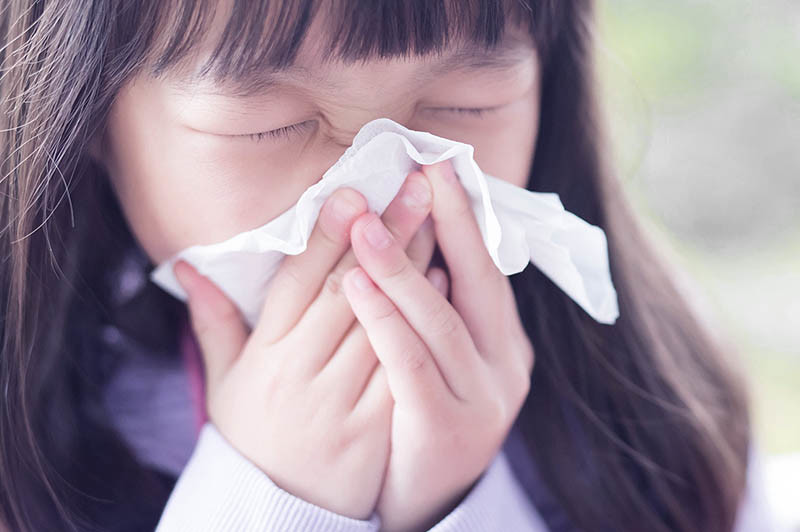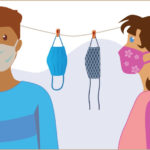What every family should know about RSV

To help keep your family safe and informed about respiratory syncytial virus (RSV), we spoke to Dr. Kathleen Conroy, Clinical Chief for Children’s Hospital Primary Care Center (CHPCC).
What is RSV and what are the symptoms?
RSV is a virus that causes upper and lower respiratory tract infections, most commonly in children and infants; however, anyone can catch it. RSV cases can commonly cause bronchiolitis (inflammation of the lower airways) and pneumonia in children under the age of two.
“Most people have probably had RSV, and if they have children who are school-aged, it’s very likely they’ve had RSV too,” Dr. Conroy shares. “Most of the time when your child has RSV, you don’t even know, largely because it looks and presents like a bad cold.”
Common symptoms to be on the lookout for, especially in younger children and infants include:
- lots of clear nasal mucus
- coughing with wheezing or labored breathing
- fever
- decreased appetite
- fatigue
- fast, labored breathing in infants
After being in contact with someone who has RSV, your child might not experience symptoms until four to six days later. As for the duration of the virus, most cases of RSV last around eight to 11 days. “Much like other colds or viruses, it can take several days after exposure to develop symptoms and then children can be contagious for a week or longer,” explains Dr. Conroy. “However, with RSV, the duration of symptoms associated with this can last up to two weeks, so don’t be surprised if your child is still coughing up to 10 days.”
How do I know if my child has RSV?
If RSV presents like a cold, how will you know if your child has it? You probably won’t unless your doctor specifically tests for it.
“The reason why we’re seeing so many cases of RSV this year is both because there seems to be more cases in general and because more respiratory testing is being done than in previous years, so we’re able to keep track of how many children are testing positive for RSV,” says Dr. Conroy. “If your child or infant is having labored breathing, or isn’t eating like they normally would, don’t wait to take them to the hospital.”
How is RSV spread?
RSV is commonly spread from person to person after touching something an infected person has touched. Some common places where children are picking up RSV include daycare, preschool, or any crowded areas where they’re more likely to share items or touch things that have been touched by others (doorknobs, toys, etc.).
How can I protect my child against RSV?
“The fewer people your child is in contact with, the less likely they are to get a virus, however that isn’t a realistic way to live,” explains Dr. Conroy. “Most of us have to send our children to daytime childcare services, so there’s no use beating yourself up if your child comes down with a virus.”
However, Dr. Conroy suggests that if your child is willing to wear a mask while out of the house or visiting crowded areas, washes their hands frequently with soap and water, and avoids unnecessary trips (like a busy mall or a museum), the likelihood of them catching a virus goes down quite a bit. “While RSV is primarily spread through touching infected surfaces, wearing a mask can help prevent children from touching their eyes, ears, nose, and mouths with unwashed hands.”
An RSV vaccine is now FDA approved for eligible infants and babies; ask your pediatrician for more information.
Is there treatment for RSV?
Since RSV is a virus, antibiotics aren’t useful when treating the symptoms. Most cases of RSV can be treated at home, with only a small percentage of cases resulting in hospitalizations. “When treating RSV at home, make sure your child is staying hydrated, keep them home from school or daycare, and monitor their breathing in case it begins to get more labored or they appear to be struggling.”
When should I seek medical attention?
Dr. Conroy shares that while infants tend to breathe rapidly naturally, you can check if they’re breathing in a more labored or distressed way by lifting their shirt and looking at their chest. “Sometimes, parents will say that they can see their child’s ribs when they breathe, or they can see where the edge of their rib cage is, or they see nostrils flaring. If those things are happening for more than 20 to 30 seconds, that’s usually a sign your infant is struggling to breathe and needs to get help.”
A second reason that infants need to be seen is if their intake of their usual milk source has decreased. If your infant has not had a wet diaper in six to eight hours, you should call your doctor’s office.
To learn more about RSV, visit the CDC website for more on symptoms and prevention.
Related Posts :
-

A new vaccine formulation could finally protect babies against RSV
Though often mild, respiratory syncytial virus (RSV) infection can cause babies to be hospitalized with bronchiolitis or pneumonia. Globally, it ...
-

What to know about Enterovirus D68
A virus called the Enterovirus D68 (EV-D68) is one to look out for — not just seasonally, but year-round — as it ...
-

Acute flaccid myelitis (AFM): What parents need to know
If you’re a parent, chances are you’ve heard the recent news reports about acute flaccid myelitis, or AFM. ...
-

Facing up to masks: Six reasons to stay the course
It’s now been almost a year since many businesses shuttered, schools closed, and Zoom calls became a way of ...





